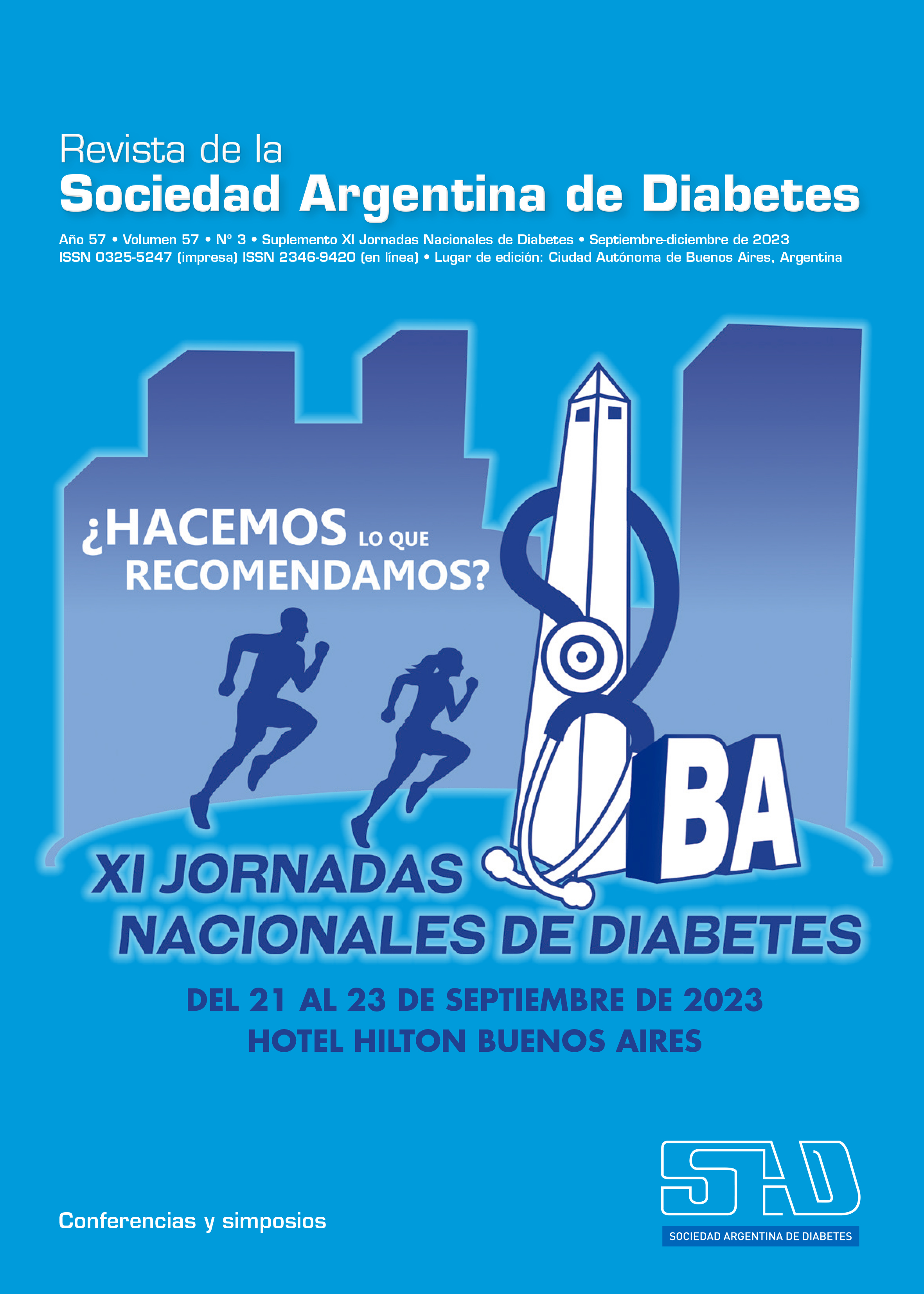How do we avoid a new ischemic cerebrovascular event?
DOI:
https://doi.org/10.47196/diab.v57i3Sup.687Keywords:
ischemic cerebrovascular event, preventionAbstract
Stroke represents the fourth leading cause of death in Argentina and one of the primary causes of disability. The recurrence of stroke remains high, reaching 15-20% within 10 years after the first event. Considering that 90% of the stroke risk depends on modifiable factors, secondary prevention strategies play a crucial role in patient care. An interdisciplinary approach to managing vascular risk factors is essential since targeting multiple risk factors has additive effects.
The main objectives of secondary prevention include controlling high blood pressure (with a target <130/80 mmHg); managing dyslipidemia with various current pharmacological strategies (high-potency/intensity statins, ezetimibe, and even PCSK9 inhibitors); individualized diabetes management, which should include new strategies with demonstrated effects on MACE, such as arGLP1; antithrombotic regimens tailored to the specific etiology (single or dual antiplatelet therapy, anticoagulation with VKAs or DOACs); and a lifestyle change program that includes smoking cessation, diet, and physical activity.
Furthermore, although controlling risk factors is important for secondary prevention of all types of ischemic stroke, there are specific strategies for various etiological subtypes (atherosclerotic disease intra/extracranial, AF, PFO, among others). As part of secondary prevention, it is crucial to maintain chronic treatment, adapting it to each stage of the patient's life. Regular monitoring of therapeutic goals, assessing treatment adherence, and considering therapy changes when necessary are important aspects to be considered.
Lastly, it is noteworthy that despite these proven effective strategies, there has been no significant decrease in recurrence over the past two decades, introducing the concept of residual risk. The future of secondary prevention for vascular events focuses on therapies that address residual risk and underlying causes, such as subclinical atherosclerosis, systemic inflammation, and endothelial dysfunction.
References
I. Flach C, et al. Risk and secondary prevention of stroke recurrence: a population-base cohort study. Stroke 2020;51(8): 2435–2444. Doi: 10.1161/STROKEAHA.120.028992Stroke.
II. Kleindorfer D, et al. 2021 Guideline for the prevention of stroke in patients with stroke and transient ischemic attack: a guideline from the American Heart Association/American Stroke Association. Stroke 2021;52: e364–e467 doi: 10.1161/STR.0000000000000375Stroke.
III. Dawson J, et al. European Stroke Organisation (ESO) guideline on pharmacological interventions for long-term secondary prevention after ischaemic stroke or transient ischaemic attack. Eur Stroke J 2022;7(3):I-II. doi: 10.1177/23969873221100032.
IV. Dhindsa DS, et al. The evolving understanding and approach to residual cardiovascular risk management. Front Cardiovasc Med 2020;7:88. doi: 10.3389/fcvm.2020.00088.
Downloads
Published
Issue
Section
License
Copyright (c) 2023 on behalf of the authors. Reproduction rights: Argentine Diabetes Society

This work is licensed under a Creative Commons Attribution-NonCommercial-NoDerivatives 4.0 International License.
Dirección Nacional de Derecho de Autor, Exp. N° 5.333.129. Instituto Nacional de la Propiedad Industrial, Marca «Revista de la Sociedad Argentina de Diabetes - Asociación Civil» N° de concesión 2.605.405 y N° de disposición 1.404/13.
La Revista de la SAD está licenciada bajo Licencia Creative Commons Atribución – No Comercial – Sin Obra Derivada 4.0 Internacional.
Por otra parte, la Revista SAD permite que los autores mantengan los derechos de autor sin restricciones.



















